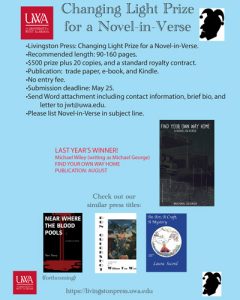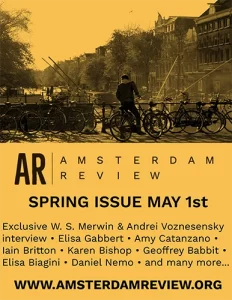The Fiddlehead – Winter 2011
Number 246
Winter 2011
Quarterly
Barbara Ellen Baldwin
The Fiddlehead has been a Canadian literary delight since 1945, when it began as the mimeographed paper-child of The Bliss Carman Poetry Society. Published quarterly by the University of New Brunswick, this treasure is an eclectic journal. I relished five stories and was enthralled with deliciously crafted writing from fifteen poets.
The Fiddlehead has been a Canadian literary delight since 1945, when it began as the mimeographed paper-child of The Bliss Carman Poetry Society. Published quarterly by the University of New Brunswick, this treasure is an eclectic journal. I relished five stories and was enthralled with deliciously crafted writing from fifteen poets.
I was drawn to the contemplative work of Jan Zwicky’s: “Autumn Again.” The piece evokes the loss of summer, the luminescent detail of nature, and both reader and speaker, are left not mourning, but longing. I loved “late August at my window”:
…All day
the crickets chanting, bright glitter on the surface
of the ebb. And ravens
talking to themselves, the flocks
of chickadees. What is
human happiness?
As the poem sighs to a close, I remember ravens can literally be taught to speak. However, I prefer the poet’s birds, chatting, oblivious to the beauty of lilting crickets “in the darkness, chanting, / chanting.”
Charmaine Cadeau’s memorable “Queen bee,” is from the poet’s dreamscape, “poised deep in her hive, / hollow and light as an echo.” I am captivated by the apiary, suffused in “blood orange,” and it is here the poet confides her admiration:
She’s the Wizard
of Oz behind the curtain,
his levers and smoke, too. She’s pipe cleaners, rubber band
whir, the laundry lint in my blue-jeans pocket. Sometimes she seems
enchanted like a daffodil that sprang to flight when kissed, a toy from
somewhere they’re still made by hand. One that bites.
The powerful “toy” image is deftly handled sans nostalgia, weighted with sweetness, exactly right.
In Christine Lowther’s “some of the many things you missed,” readers are introduced to “jellyfish that don’t sting,” and the poet gives the reader lacy images of the “moon jellies,” ethereal beings, thronging the bay:
they look more like petticoats ballooning down a staircase
or shower caps or miniature parachutes
the size of a thimble or a dinner plate
always only a few until one year there comes a bloom
The poet’s joy in these creatures is best expressed in her lower-case hope of joining them, however briefly:
i wish they’d crowd their cool soft bodies up to mine
wish i could say I’ve been swarmed by moon jellies
wish i could say I’ve been to a moon jelly love-in
ecstatic in the slippery translucent animals
When I encountered Medrie Purdham’s sardonic musings in “Heliotrope,” I was fleetingly reminded of Roethke’s “The Geranium.” Purdham, though, has a different take on her living present. This “maiden aunt”—needy, undefended—is a gift that takes both time and care:
it would need such coddling, three spritzes a day,
old standards crooned to it in soft ululations,
would need the company of one person, not two—
inspired by the measured breath of solitude.
As the poem progresses, Purdham’s vanilla-scented charge thirsts ominously. The poem reveals this plant is an eerie companion, always wanting, wanting.
In “Freight,” Shane Neilson’s short story, I was so shocked by the first page, and final line, that I literally threw the journal in the air! The whole piece could have ended there, in perfection. I was grateful I kept reading, because the images were trenchant; a father-son relationship and the writer’s skill were all captivating. Here’s to a bone-weary worker, the wind, the rain. The reader is swiftly placed:
He was on top of the truck, and this was work, he had to work at the tarp to get it to cover the load, it had to be taut or the wind would get underneath and lift it up like a fingernail, the wind would strain against the tarp and rip the bungee cords and the truck would be hauling its own parachute.
The harrowing truck-bed scenario leads into a can’t-put-it-down tale that is all too short, but satisfying.
Michael Doyle’s “The Disappearing Man,” could be ripped from a cheap tabloid’s pages, but it retains magic and believability as one couple’s marriage is erased by infidelity. Doyle’s self-involved husband really is fading into the wallpaper. His wife and mistress seem to simultaneously dismiss him. Pulled to his reflection again and again, the adulterer sees only what he is losing:
After stepping down, he caught another glimpse of his face in the mirror. He was no longer particularly radiant…He gazed at his image and saw the man he normally saw. He found a grey hair and pulled it out, but there were others.
Although the storyline feels familiar, the growing darkness here is riveting. The reader finds the end of this piece disquietingly cheerful.
I am an avid Tom Wayman fan. Like other instructor/poets, I clutched his famously reprinted, borrowed, and bootlegged poem “Did I Miss Anything?” with fevered joy, and married it to my syllabus. Wayman’s poems are not all soaked in quotidian commentary, of course. In “Portal,” the author, deep in midwinter, is content. In December he sees:
Where the ridge’s snowy evergreens
begin their rise toward the summit, a passage
opens through a fringe of
hazels and maples
whose emptied limbs are bowed beneath
white.
Here is cold beauty, but not cold without end. The poet calls up memories of “hot July shadow,” the deer that ranged there, and yes, sees the “now frozen white mounds.” The lawns, are strange, transformative, but not for long. He is in reverie, not mournful. In brevity and wonder he notes “woods” that patiently wait, independent of clocks or calendars. In the meantime, Wayman quietly savors one winter moment, which won’t come again.
This issue of The Fiddlehead is a basket of goodies, to be enjoyed in any kind of weather. I admired the eloquence and keen-eyed reviews of poetry and prose, and was entranced with the gorgeous cover art by Anna Cameron. Cameron’s cover should be saved behind glass. This journal is a keeper.
[www.thefiddlehead.ca/]




